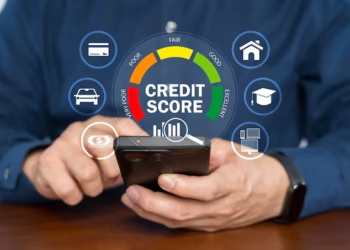Do you want financial stability? You say you do, but how is your credit score looking? With a poor credit score, financial well-being may not be as attainable as it could be. If you’re working towards a future with financial wellness, it’s time to start looking into the best ways to get rid of bad credit habits. This way, you can start following a roadmap of good decisions on your way to financial success. Take a look at these tips below:
Pay on time
When you’re looking to build a solid credit score, it’s important that you make a plan to pay on time. Late payments may not only incur fees, but they can also reflect poorly with your credit score. If you’re looking forward to a future where you can buy a home that suits what you can afford with your mortgage calculator, it’s important you build up good credit habits so that your score gets you where you want to go.
A bad credit habit is putting payments off and letting your accounts incur fees and interest. When opening credit card accounts or getting a loan, make a plan so that you can be confident that you can pay it off every month, on time.
Avoid too many accounts
Some people love to shop with credit cards. They think it’s a great way to buy all of the things they want. However, what can end up happening is that they have plenty of accounts open and they use too much of their credit limit. When you have numerous accounts and aren’t doing the best job of paying them off, that’s going to reflect very poorly on your credit score so that’s something that you want to avoid.
Only having one account
However, lenders want to see that you have the ability to handle versatile types of loans and credit options, so it’s a good idea to have a couple of different options available. Try switching things up whenever possible. You may want to consider a larger loan such as buying a car and pair that up with a credit card that you really only use to pay for your groceries. When opening accounts, take time to be confident that you can pay them off on time and within a reasonable amount of time.
Don’t overspend
While you may have plenty of available spending money with your credit card and can buy larger items, that doesn’t mean that you should do that. You want to be careful with how much you spend, as many lenders are looking at how your credit usage is. Keep it low, below 50%, if possible, if you want to see your credit score go up. While all that “free money” may be appealing, know that giving into that way of thinking could have you end up with a poor credit score and some debt to boot.
Don’t ignore your score
It can be tempting to ignore your credit score, especially if it’s not doing too great, but you don’t want to do that if you’re hoping to build up better habits. It’s important to stare difficult things head on so that you can make better decisions in your future to come. From learning how to make better credit decisions when shopping around to making sure you’re paying off debt on time, there are many things to take into account as you strive to build better habits.
Use sites like Credit Karma to always stay abreast of ways you can improve and to keep track of your progress.

In Conclusion
If you’re hoping to move forward in your life, building better credit habits is the way to go. Start looking into the best practices that can help you improve your credit score. It will help you have more financial stability in your life.










